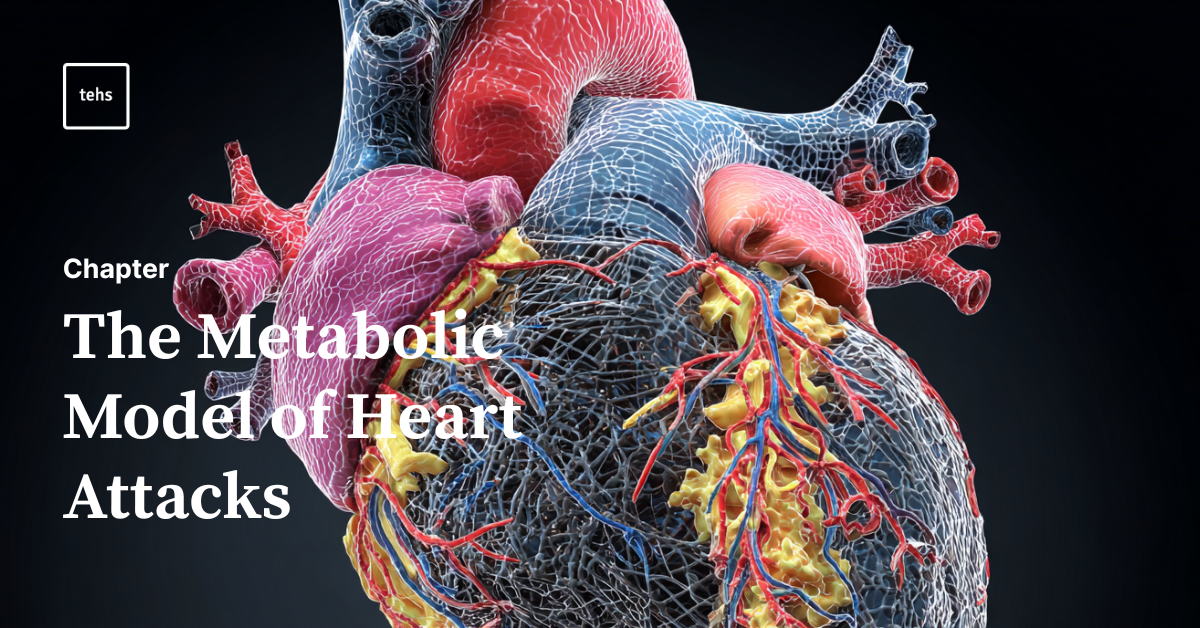Why do many heart attacks occur without a major arterial blockage? This chapter reframes myocardial infarction as an energy collapse inside cardiac cells: when mitochondria cannot sustain aerobic metabolism, the heart shifts to inefficient anaerobic glycolysis, ATP plunges, lactate builds, and contractile failure follows, even with non-obstructive arteries. In short, this chapter treats heart attacks as mitochondrial failure and outlines practical supports for the cardiac energy system.
Listen to the whole episode on Spotify.
What’s inside:
- Beyond the plumbing model—why metabolism matters now. You’ll see why a clot is only one path to infarction. A metabolic lens explains MINOCA and related edge cases. The heart works without rest, so lactate clearance is limited. When oxygen use falters, the myocardium shifts to low-yield glycolysis. That shift drives rapid loss of function. The chapter shows how image-based targeting supports continuity of care. Standards replace guesswork with clear protocols.
- From mitochondria to symptoms—the collapse sequence. Under normal conditions, the heart favors fatty-acid oxidation. When oxidative phosphorylation stalls, ATP falls sharply. Lactic acidosis and calcium handling issues soon follow. Membranes destabilize, arrhythmia risk rises, and contraction weakens. These changes explain chest pain, fatigue, and sudden loss of output. Common triggers include toxins and nutrient deficits. Chronic inflammation, infection, and sympathetic overdrive also play roles.
- Therapeutic implications that complement procedures. Support the myocardium by refueling and protecting its engines. Improve metabolic flexibility, including ketone use when appropriate. Consider targeted mitochondrial nutrients: CoQ10, D-ribose, L-carnitine, and magnesium. Use light-based strategies that support the electron transport chain. Reduce inflammatory drivers and pair these steps with conventional care. The emphasis is on safety and personalization.
Who benefits:
- Clinicians and clinic leads: A clear framework for non-obstructive events. Link symptoms to mitochondrial status and plan adjunctive strategies.
- Researchers and engineers: A systems map that connects ATP dynamics, lactate, and failure modes. Use it to design trials and protocols. Methods are testable and auditable.
- Health coaches, educators, interns, and informed readers: Practical talking points on lifestyle, nutrients, and light. Content fits easily into curricula and workshops. The guidance favors responsible, incremental adoption.
Interested in learning more about “The Metabolic Model of Heart Attacks—Beyond a Plumbing Failure”?
